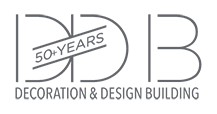News
The Top 3 Smart Home Features Your Clients Want
Posted on 05/11/21
Author: JoAnn Arcenal, Business Development Manager
 With the increased amount of time spent at home over the past year, our clients have become hyperaware of what they like (or want) in their personal space. The home has become a sanctuary, so more and more people are investing in improving the experience.
It’s little wonder that the most in-demand new features address wellness and the work/life balance:
With the increased amount of time spent at home over the past year, our clients have become hyperaware of what they like (or want) in their personal space. The home has become a sanctuary, so more and more people are investing in improving the experience.
It’s little wonder that the most in-demand new features address wellness and the work/life balance:
 With the increased amount of time spent at home over the past year, our clients have become hyperaware of what they like (or want) in their personal space. The home has become a sanctuary, so more and more people are investing in improving the experience.
It’s little wonder that the most in-demand new features address wellness and the work/life balance:
With the increased amount of time spent at home over the past year, our clients have become hyperaware of what they like (or want) in their personal space. The home has become a sanctuary, so more and more people are investing in improving the experience.
It’s little wonder that the most in-demand new features address wellness and the work/life balance:
- Touchless technology Voice and touchless technologies were already poised to thrive in the residential technology market prior to the COVID-19 pandemic. However, they’re now on the fast track for adoption, as consumers spend more time in the safety of their homes.
- Adapted work-from-home spaces Some of the work-from-home setups driven by the pandemic were makeshift at first, but now that they’re part of everyday life, there’s a need for a more elegant and permanent solution. In the American Society of Interior Designers (ASID) 2020 Interior Design Resiliency Report, the top-ranked home feature was more defined workspaces, chosen by 75% of respondents.
- Distributed audio and video Audio and video content consumption soared in 2020, from an average of about 3 hours per day in 2019 to just under 7 hours per day in 2020, according to a report by Double Verify. With most of the globe under stay-at-home orders for much of the year, people working-from-home repurposed commuting hours by staying up later at night and waking up later in the morning to consume more entertainment.
TAGS
Crestron
Home Automation
SHARE THIS NEWS
You might like
See all
04/03/2024
D&D Spring Market 2024
11/28/2023
D&D Holiday Open House
09/15/2023
D&D Fall Market 2023
05/16/2023
A Royal British Celebration
04/27/2023
Sanderson Design Group - Spring Market 2023
04/12/2023
Castel - Spring Market 2023
04/10/2023
D&D Spring Market 2023: NYC
04/10/2023
Gloster - Spring Market 2023
04/10/2023
Ochre - Spring Market 2023
Get Social on Instagram
Follow us @
Join Our Mailing List
